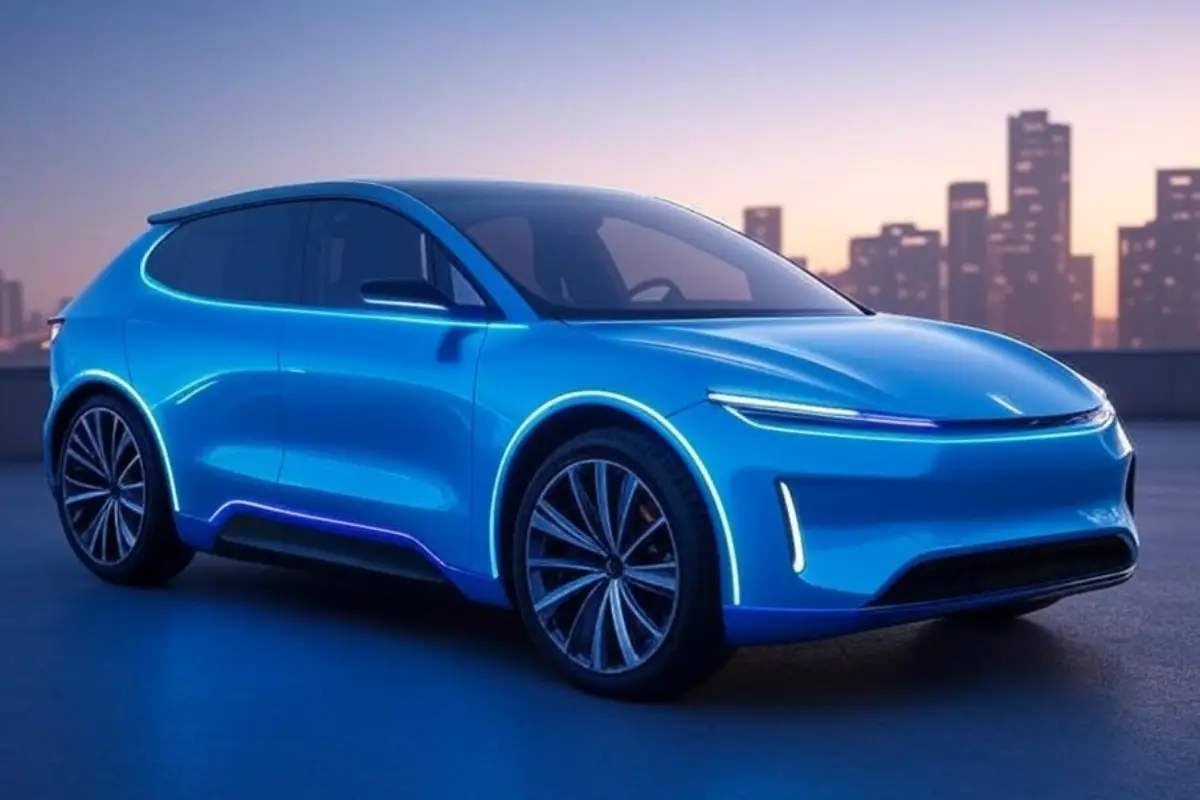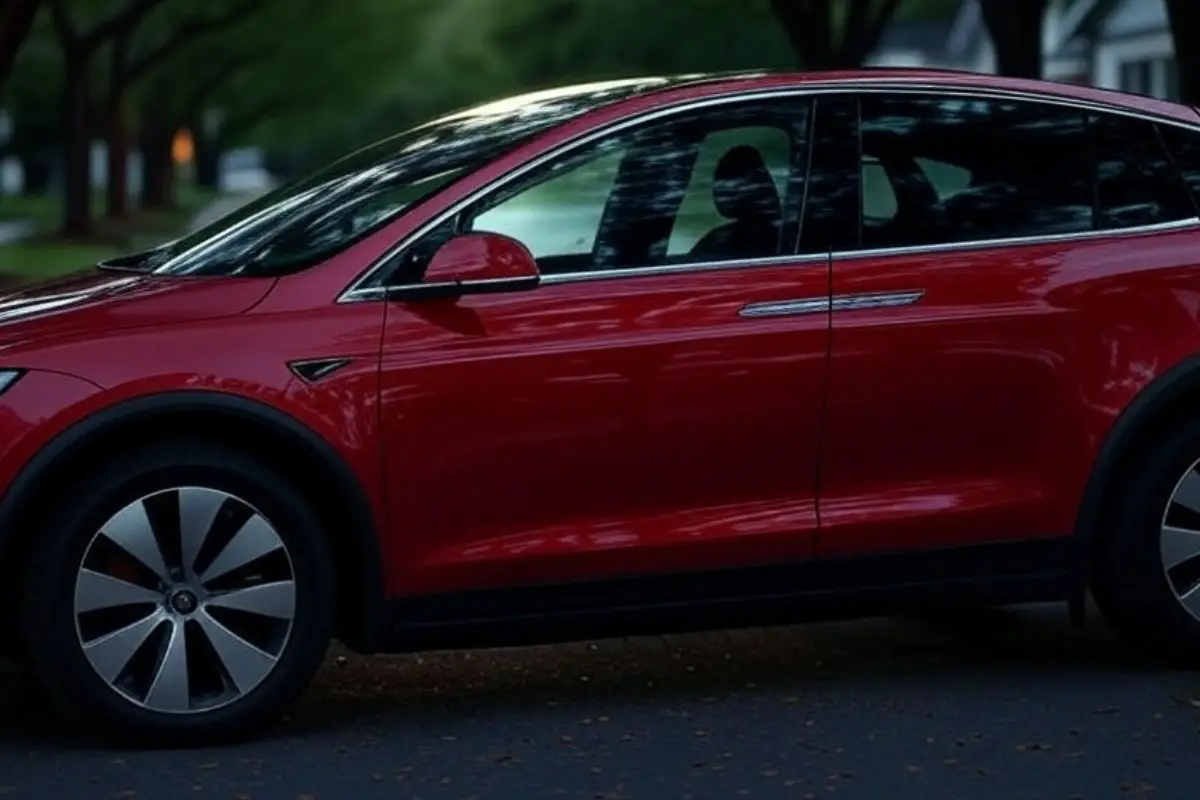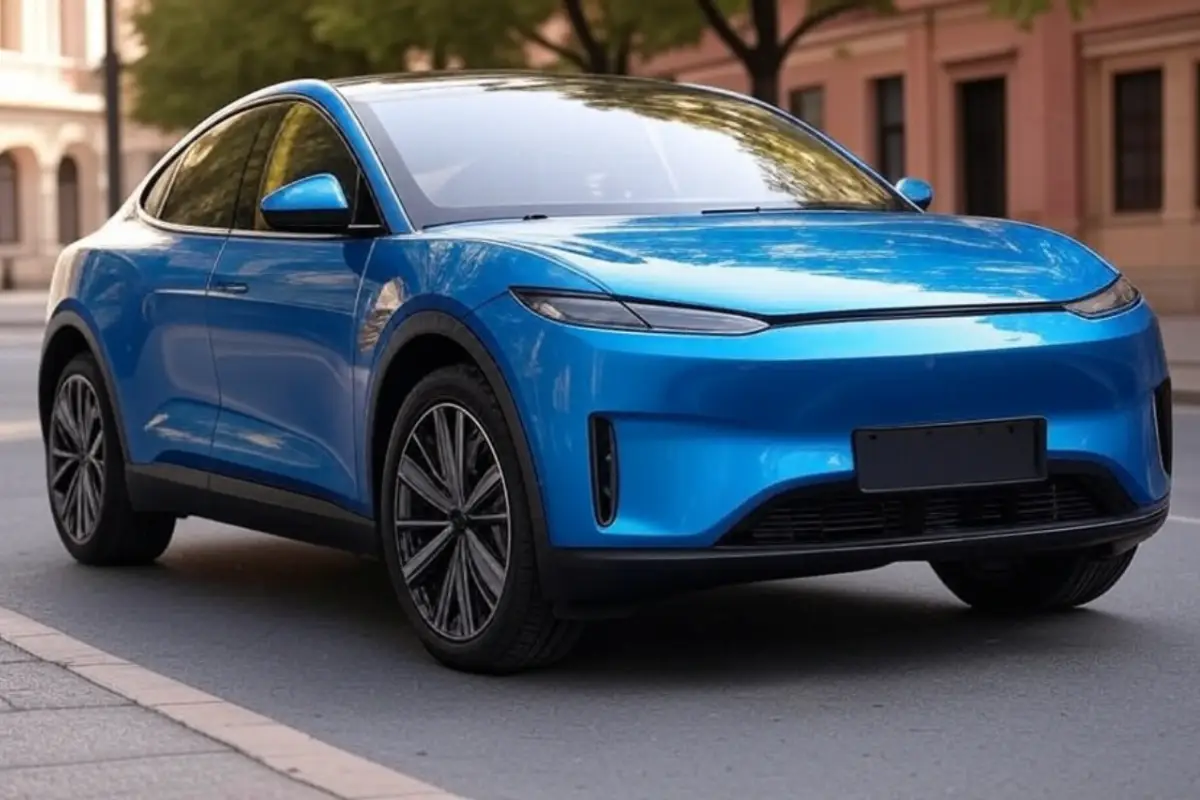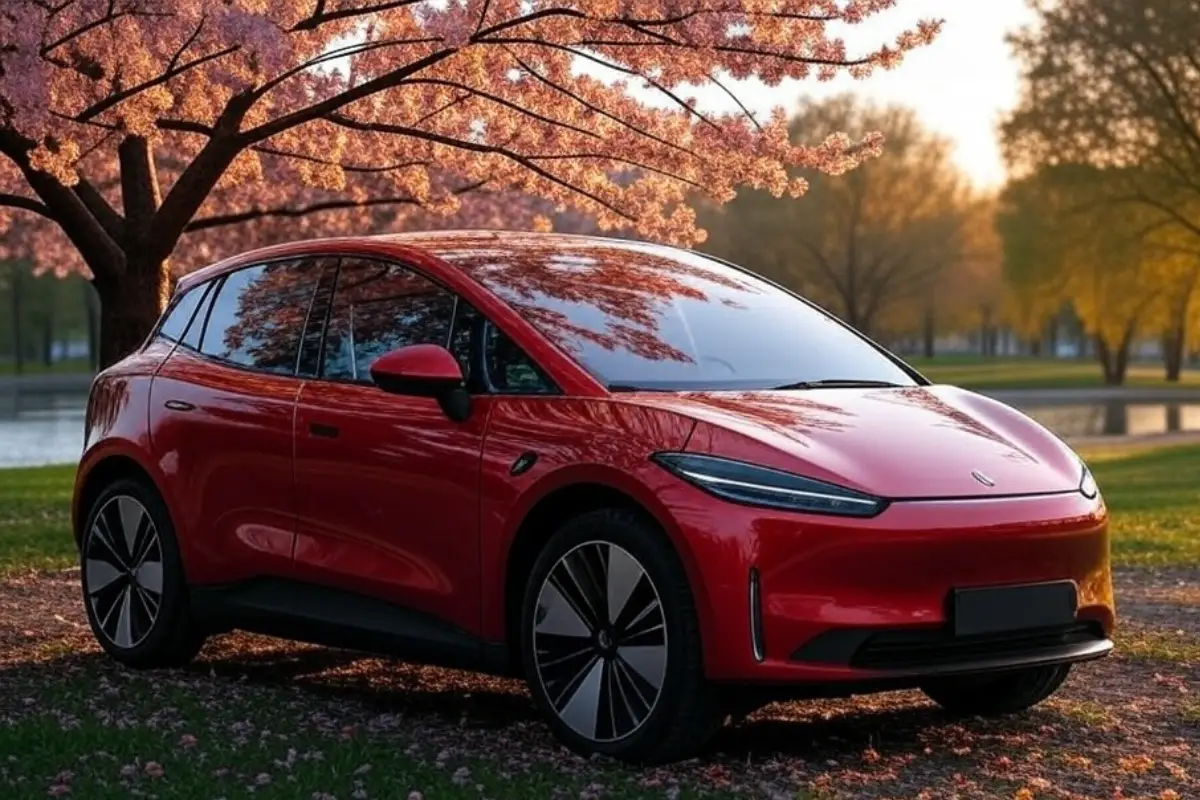Learn about the different types of EVs, their environmental benefits, cost considerations, and how to choose the right model for your needs. Discover home charging solutions and the importance of public charging infrastructure. Embrace eco-friendly driving tips and understand the future of sustainable transportation. Get insights on maintenance practices and the financial benefits of electric vehicles with incentives and tax credits. Transition to cleaner, more efficient driving today.
Table of Contents
Introduction to Electric Vehicles
Electric vehicles (EVs) are becoming increasingly prominent as a viable alternative to traditional gas-powered vehicles. At their core, electric vehicles use electricity stored in batteries to power an electric motor, eliminating the need for fossil fuels. This unique propulsion system distinguishes them significantly from their internal combustion engine counterparts, which rely on gasoline or diesel for operation. As concerns about environmental sustainability and rising fuel prices grow, many consumers are now considering the transition to EVs as a practical solution.
One of the primary advantages of switching to an EV is the reduction of greenhouse gas emissions. According to recent statistics, electric vehicles can contribute to a substantial decrease in carbon emissions compared to traditional vehicles. Studies indicate that using an EV can reduce your carbon footprint by up to 50%, especially when charged from renewable energy sources. This shift not only benefits individual drivers but also promotes overall environmental health.
In addition to environmental benefits, the economic implications of electric vehicles are becoming increasingly favorable. The cost of ownership for an EV often proves to be lower than that of gas vehicles in the long run, primarily due to reduced fuel costs and lower maintenance expenses. Furthermore, many governments offer incentives for EV purchases, including tax rebates and grants, further encouraging consumers to consider making the switch.
The rise in electric vehicle adoption also reflects advancements in technology and charging infrastructure. With more charging stations being installed across urban and rural areas, the practicality of owning an electric vehicle continues to improve. As awareness grows and technology advances, it is evident that transitioning to electric vehicles is not only beneficial for individuals but also essential for fostering a sustainable future.
Understanding the Different Types of Electric Vehicles
The transition to more sustainable transportation has led to the rise of electric vehicles (EVs), each with distinct features. Understanding these vehicle types helps potential buyers make informed decisions. The primary categories of EVs include battery electric vehicles (BEVs), plug-in hybrid electric vehicles (PHEVs), and fuel cell electric vehicles (FCEVs).
Battery electric vehicles (BEVs) operate solely on electricity stored in onboard batteries. They are charged using domestic or public charging stations and have no internal combustion engine. A significant advantage of BEVs is their zero tailpipe emissions, contributing to cleaner air in urban environments. However, their driving range can be a limitation when compared to traditional gasoline vehicles, and charging infrastructure may not be as widespread in certain regions.
Plug-in hybrid electric vehicles (PHEVs) feature both an electric motor and a traditional internal combustion engine. This dual system allows PHEVs to run on electricity for short distances, generally ranging between 20 to 50 miles, while relying on gasoline for longer trips. The primary benefit of PHEVs is their flexibility, allowing drivers the option to utilize either electric power or gasoline according to their needs. On the downside, PHEVs still produce emissions when operating on gasoline, which may be a drawback for environmentally conscious consumers.
Fuel cell electric vehicles (FCEVs) are powered by hydrogen fuel cells that convert hydrogen into electricity, producing only water vapor as a byproduct. This clean energy source provides longer ranges and faster refueling times compared to battery EVs. However, the infrastructure for hydrogen refueling is currently limited, making it less accessible than charging networks for BEVs. Each type of electric vehicle presents unique advantages and disadvantages, requiring potential EV buyers to assess their requirements and preferences carefully.

Evaluating Your Lifestyle and Driving Needs
When contemplating a transition to an EV, it is imperative to evaluate your lifestyle and driving needs thoroughly. This assessment will help determine if switching to an EV is feasible and beneficial. Begin by analyzing your daily commute distances. Most electric vehicles come with varying ranges, and understanding your average travel distance will aid in selecting a model that suits your requirements. For instance, if your commute is less than 100 miles round-trip, a mid-range EV may suffice. However, for longer distances, you may want to consider models with extended ranges.
Next, consider the availability of charging infrastructure in your area. The convenience of an electric vehicle heavily relies on accessible charging stations. Investigate whether your home, workplace, and frequent destinations offer charging options. If home charging is not available, or if public charging stations are scarce in your routine routes, it may pose a challenge to own an EV. Moreover, consider the charging time required for different types of charging stations; fast chargers can significantly reduce downtime in a busy lifestyle.
Additionally, examine your typical driving patterns. Do you often make short trips within the city, or do you embark on longer road trips? EVs are well-suited for daily city commutes and short distances, as they can be conveniently charged overnight. For road trips, though, it’s essential to factor in charging breaks and the compatibility of charging stations along your route. Another crucial element to reflect on is the number of passengers and the cargo space needed in your vehicle; this can further influence your choice.
In conclusion, evaluating your lifestyle and driving habits is a critical step in the decision-making process when switching to an electric vehicle. By understanding your daily travel requirements and the availability of charging infrastructure, you can make an informed decision that aligns with your needs and preferences.
The Financial Implications of Switching to an EV
Transitioning to an EV can often seem like a significant financial decision for many consumers. The initial purchase cost of an electric vehicle is typically higher than that of a conventional gasoline-powered car, but this price discrepancy is frequently offset by numerous financial advantages over time. Notably, various government and local incentives can substantially reduce the upfront cost of an electric vehicle. These can include tax credits, rebates, and grants aimed at encouraging the adoption of cleaner transportation options. Potential buyers should research available incentives in their area, as these can vary significantly based on location.
In addition to initial subsidies, owning an electric vehicle often leads to considerable savings in operating costs. Electric cars generally cost less to maintain due to having fewer moving parts compared to traditional internal combustion engines. For instance, EVs do not require oil changes, and they often have reduced wear on brakes because of regenerative braking systems. Furthermore, the cost of electricity compared to gasoline typically results in lower fueling expenses. A detailed assessment comparing the costs of charging an electric vehicle against prevailing gas prices will reveal substantial savings that accumulate over time.
Long-term financial considerations are also worth noting. Many electric vehicles have shown a trend toward higher resale values compared to their gasoline counterparts, and this is particularly true as the market for EVs expands and matures. As electric vehicles become more prevalent, their desirability in the used car market is likely to increase. Additionally, by investing in an electric vehicle, owners contribute to the growing demand for sustainable technologies, which may result in a favorable perception and demand in the future. All these aspects collectively contribute to the financial landscape surrounding the transition to electric vehicles, making it a viable option for many consumers.

Exploring Charging Options
As the adoption of electric vehicles (EVs) continues to grow, understanding the various charging options becomes essential for potential owners. When considering an electric vehicle, it is vital to be familiar with the different charging solutions available, which typically fall into three main categories: home charging, public charging stations, and workplace charging.
Home charging is often the most convenient and cost-effective solution for EV owners. By installing a Level 2 charging station at home, drivers can achieve a full charge overnight. This method typically uses a 240-volt outlet and can recharge most electric vehicles in approximately 4 to 8 hours, depending on the battery size. It is advisable to consult a licensed electrician to assess the electrical capacity of the home and ensure proper installation to avoid potential hazards.
Public charging stations play a critical role in expanding the electric vehicle infrastructure. These charging points can be found in parking lots, shopping centers, and even along highways. They usually offer Level 2 charging, which is suitable for longer stops, as well as DC fast charging that significantly reduces charging time to as little as 30 minutes for an 80% charge, making them ideal for road trips and emergencies. To locate nearby public charging options, drivers can use various mobile applications that provide maps and real-time availability of charging stations.
Workplace charging is another valuable option for electric vehicle owners. Many companies are now recognizing the benefits of providing charging facilities for employees. This not only promotes sustainability but also encourages the shift to electric vehicle usage. Employers can explore options to install charging stations on-site, allowing employees to charge their vehicles during the workday, thus ensuring a ready-to-go battery when they leave work.
By carefully considering these charging options, potential electric vehicle owners can select the most suitable methods for their needs, ensuring a seamless transition to an electric lifestyle.
Maintenance and Care of Electric Vehicles
Electric vehicles (EVs) present a new paradigm in automotive care and maintenance compared to traditional fuel-powered vehicles. While they typically require less maintenance due to fewer moving parts, there are still unique aspects that every EV owner should familiarize themselves with to ensure optimal performance and longevity.
One of the most critical components of an electric vehicle is its battery. Proper battery care is essential, as it affects both the range and efficiency of the vehicle. EV owners should aim to maintain their battery between 20% and 80% charge whenever possible, avoiding frequent trips to a full charge or a near-empty state. Additionally, extreme temperatures can impact battery health, so parking in shaded or temperature-regulated garages can mitigate potential damage.
Software updates are another crucial aspect of electric vehicle maintenance. Many manufacturers provide over-the-air (OTA) updates that enhance performance, fix bugs, and sometimes even introduce new features. Keeping the vehicle’s software up to date not only maximizes efficiency but can improve range and battery performance as well.
Tire maintenance also demands attention in electric vehicles. Due to their heavy weight, especially from batteries, EVs may experience different tire wear compared to conventional cars. Regularly checking tire pressure and tread will ensure better road handling and energy efficiency. It is recommended that EV owners maintain the recommended tire pressure as stated in the owner’s manual for optimal performance.
Total upkeep for electric vehicles includes routine inspections of braking systems, suspension, and other essential mechanical components. Although they tend to be less wear-and-tear-prone, periodic checks can help identify any potential issues before they escalate. By prioritizing these maintenance practices, electric vehicle owners can enjoy a dependable and efficient driving experience.

Addressing Common Concerns and Misconceptions
As the popularity of electric vehicles (EVs) continues to grow, several concerns and misconceptions can still deter potential buyers. One of the most prevalent issues is range anxiety, the fear that an electric vehicle will run out of charge before reaching a destination. However, modern electric vehicles are equipped with increasingly advanced battery technology that provides a range typically between 150 to over 300 miles on a full charge, which is sufficient for daily commutes and longer trips alike.
Charging time is another significant concern for potential EV owners. Many people assume that charging an electric vehicle takes an excessive amount of time compared to refueling a gas-powered car. However, the charging infrastructure has evolved rapidly, with many public charging stations offering fast charging options that can recharge up to 80% of a battery in approximately 30 minutes. Additionally, home charging stations allow users to conveniently charge their vehicles overnight, effectively starting each day with a full battery.
Battery life is often cited as a deterrent for potential electric vehicle buyers. Individuals worry that battery degradation will lead to expensive replacements. However, most electric vehicles come with extended warranties that cover battery performance, and industry research indicates that EV batteries are designed to last between 8 to 15 years under normal driving conditions. Moreover, the cost of batteries is decreasing, making replacement more affordable when needed.
Lastly, the performance of electric vehicles is often underestimated. Contrary to the belief that EVs lack power, many models deliver instant torque, providing swift acceleration and a thrilling driving experience. This performance capability, combined with the environmental benefits of electric vehicles, underscores the advantages of making the switch. Addressing these common concerns can help potential buyers feel more informed and confident in their decision to transition to electric vehicles.
Test Driving and Choosing the Right Model
Transitioning to an electric vehicle (EV) is an exciting endeavor, and a crucial step in this process is test driving various models to find the one that best suits your needs. During a test drive, potential buyers should pay attention to several key elements. Firstly, assess the vehicle’s acceleration and handling. Electric vehicles often provide instant torque, leading to a unique driving experience compared to traditional combustion engine vehicles. Observation of the vehicle’s responsiveness can greatly influence your decision.
Additionally, evaluate the comfort and space within the EV. Is there sufficient headroom? How does the seating feel during your drive? It’s essential to envision how this vehicle will accommodate your lifestyle on a daily basis. Furthermore, while driving, consider the quality of the technology features, such as responsive infotainment systems and driver assistance tools. Test all these features to ensure they align with your preferences.
When at the dealership, it is important to ask specific questions regarding the electric vehicle’s range, charging options, battery warranty, and available incentives or rebates. Understanding the charging infrastructure is vital, so inquire about compatible chargers for your home or nearby public charging stations. You may also want to know about the estimated cost of ownership, including maintenance and electricity expenses, compared to other vehicles.
Lastly, think about the long-term benefits of the model you’re considering. Research user reviews and expert opinions to gauge reliability and performance. Choosing the right electric vehicle does not just depend on immediate preferences but also future needs and sustainability goals. Taking the time to carefully consider these factors during your test drive will help ensure you make an informed decision on your transition to an electric vehicle.

Conclusion: Making the Transition
Transitioning to an electric vehicle (EV) marks an important step towards sustainable and environmentally friendly transportation. Throughout this guide, we have covered essential aspects to consider when making this shift, from understanding the different types of electric vehicles to evaluating their benefits and costs. It is crucial to assess personal needs and preferences to select the most suitable electric vehicle. Factors such as range, charging infrastructure, and total cost of ownership play a significant role in ensuring a successful transition.
As potential EV owners embark on this journey, it is helpful to utilize a variety of resources available in the community. Engaging with local electric vehicle associations and online forums can provide valuable insights and support from experienced EV owners. These communities are often rich in knowledge and can offer recommendations on the best practices related to charging, maintenance, and driving experiences. Moreover, many municipalities provide incentives for the purchase of electric vehicles, which can ease the financial burden associated with transitioning to this modern technology.
It is also recommended to conduct thorough research on various charging solutions. Home charging stations are often the most convenient option for daily use, while public charging networks can cater to longer trips. Understanding the location and availability of these charging stations will enhance overall satisfaction with the electric vehicle experience. Moreover, considering the use of smart charging technologies can help in optimizing energy costs.
In conclusion, transitioning to an electric vehicle is a thoughtful approach to contributing towards a cleaner environment while also enjoying significant savings in fuel and maintenance costs. By engaging with community resources, comprehensively researching options, and embracing the possibilities of electric vehicle ownership, new EV owners can navigate this transition smoothly, unlocking a new era of driving that is both environmentally conscious and cost-effective.





